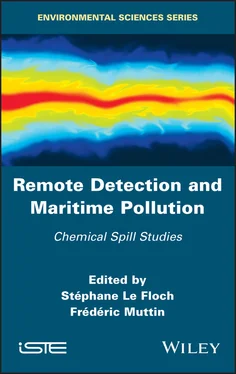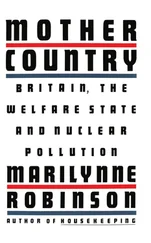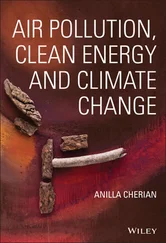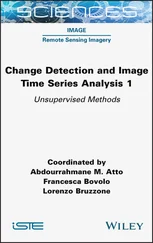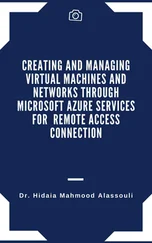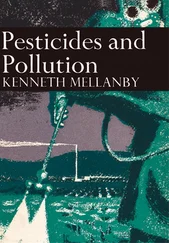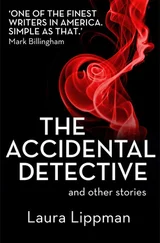Remote Detection and Maritime Pollution
Здесь есть возможность читать онлайн «Remote Detection and Maritime Pollution» — ознакомительный отрывок электронной книги совершенно бесплатно, а после прочтения отрывка купить полную версию. В некоторых случаях можно слушать аудио, скачать через торрент в формате fb2 и присутствует краткое содержание. Жанр: unrecognised, на английском языке. Описание произведения, (предисловие) а так же отзывы посетителей доступны на портале библиотеки ЛибКат.
- Название:Remote Detection and Maritime Pollution
- Автор:
- Жанр:
- Год:неизвестен
- ISBN:нет данных
- Рейтинг книги:5 / 5. Голосов: 1
-
Избранное:Добавить в избранное
- Отзывы:
-
Ваша оценка:
- 100
- 1
- 2
- 3
- 4
- 5
Remote Detection and Maritime Pollution: краткое содержание, описание и аннотация
Предлагаем к чтению аннотацию, описание, краткое содержание или предисловие (зависит от того, что написал сам автор книги «Remote Detection and Maritime Pollution»). Если вы не нашли необходимую информацию о книге — напишите в комментариях, мы постараемся отыскать её.
Remote Detection and Maritime Pollution — читать онлайн ознакомительный отрывок
Ниже представлен текст книги, разбитый по страницам. Система сохранения места последней прочитанной страницы, позволяет с удобством читать онлайн бесплатно книгу «Remote Detection and Maritime Pollution», без необходимости каждый раз заново искать на чём Вы остановились. Поставьте закладку, и сможете в любой момент перейти на страницу, на которой закончили чтение.
Интервал:
Закладка:
To maintain sufficient safety levels so as to prevent accidental releases, to determine the response actions to be rapidly implemented in the event of an incident and to more fully understand the behavior of oil at sea, Total depends on the research teams liable to support the scientific and technical developments identified so as to preserve the ocean and its ecosystems.
In order to maintain its remote sensing capabilities, Total deploys a research program that encompasses recent developments and promotes exchanges between the different players in the field.
True to its commitment towards meeting the environmental challenges and preserving the environment wherever the Group operates, Total implements anticipatory measures and environmental protection actions against oil pollution. This commitment is illustrated by the support it provides to the activities conducted by CEDRE, with which the Group enjoys close collaboration.
CEDRE’s portfolio of activities clearly positions it at the crossroads of the needs expressed by the different stakeholders and of the proposed solutions promoted by research players.
The CEDRE Information Days, from which this book developed, are a chance to share, discuss and challenge these approaches, in order to pinpoint progress opportunities or even new research projects. Naturally, as an industrial player, Total both benefits from and greatly contributes to these debates.
Frédéric PÉRIÉ
President of CEDRE’s Strategy Committee
Why was remote sensing chosen as the topic of this book? Such systems have been frequently used by CEDRE, in particular during the Prestige oil spill in 2002. Over and above operational aspects, it is also extremely useful for detecting deliberate discharge. In this context, strictly speaking, CEDRE does not conduct remote sensing, but rather works as a partner, in particular alongside the French Navy or within the framework of projects funded by the European Union. We are involved in equipment trials and tests, as well as in analyzing POLREPs, and we have been organizing aerial observation and remote sensing training courses for over 20 years. We also provide advice to the French and foreign authorities in charge of directing operations and of post-response legal aspects. The aim of this book is to offer as broad a vision as possible of remote sensing in the field of marine spills.
Stéphane DOLL
Director of CEDRE
1
POLLUPROOF Project
1.1. Introduction
In cases of maritime pollution by HNS (Hazardous and Noxious Substances), specific methods of identification and characterization are needed. The project POLLUPROOF (which started in January 2014 and ended in mid-2017) aims to test and validate the use of optical sensing methods, including hyperspectral and radar sensors, in order to detect, locate and classify six HNS. In this chapter, the experimental approach followed during the project is detailed: the calibration of optical sensors in mesoscale experiments and the validation of optical and radar sensors in a realistic experiment at sea. The promising results obtained are specifically explained in the other chapters.
Maritime shipping activities are responsible for about 20% of the pollution at sea. Pollutants discharged accidentally or deliberately can endanger the biodiversity and eco-balance of our oceans. Exhaust emissions and cargo mishaps associated with an increase in vessel traffic are sources of pollution that affect both the marine environment (acidification, contamination of flora and fauna) and land (acid rain). This issue has become a priority at the national (Grenelle de la Mer) and regional (European – directives 2005/35 and 2005/33) levels, as demonstrated by the implementation of several international conventions (e.g. OPRC-HNS Protocol [OPR 00], MARPOL (completed in 1978) [MAR 73]). Obviously, the removal or drastic reduction of pollution resulting from maritime activities is a desirable objective. The magnitude of the problem is highlighted by the quantity of goods transported by sea: of an estimated 8,000 million tonnes (Mt) of chemicals transported worldwide, 350 Mt are transported via European waterways. It is estimated that there are more than 100 incidents per year involving the illegal discharge of noxious liquid substances in these waters. For over 25 years, French Customs (DGDDI) have deployed aircraft equipped with remote sensing instruments (radar and scanner IR/UV), in order to successfully prosecute ships involved in oil spill incidents. The effectiveness of this policy has been demonstrated through a significant reduction in oil pollution in the waters under French jurisdiction (during the period between 2006 and 2012, the number of ships caught polluting was reduced by threefold).
This chapter presents the POLLUPROOF project through its objectives and the experimental approach used to achieve them. Results from the experimental parts are beyond the scope of this chapter and will be part of other chapters.
1.2. POLLUPROOF project
1.2.1. Objectives
The POLLUPROOF (PROOF improvement of HNS maritime POLLution by airborne radar and optical facilities) project would enhance the capabilities of French Customs to detect, locate and classify pollutants (other than hydrocarbons) originating from ship emissions (including particulates), in order to collect evidence for the prosecution of offenders while ensuring an effective intervention in the case of accidental discharge at sea.
The project is funded by ANR ECO-TECH 2013, and the members of the consortium have a recognized and complementary expertise in the field of aerial detection and marine pollution: ONERA, DGDDI, CEDRE, CEPPOL, Agenium, AVDEF and DRDC. In addition to the consortium, Transport Canada (TC) acts as an end-user and member of the steering committee. The project began in January 2014 and concluded in mid-2017.
The objectives of this project are:
1 1) to verify the ability to detect, locate and classify at least three of the six most noxious liquid substances transported by sea in Europe;
2 2) to achieve a reduction of spilled noxious liquid substances equivalent to the level for hydrocarbon emissions;
3 3) to develop a stronger policy to control the release of noxious gases within the sulfide emission control areas (SECA).
These objectives will be achieved by:
– deployment of radar (SAR/SLAR) and optical sensing (hyperspectral cameras) capabilities for detecting liquid pollutants at sea;
– evaluation of the complementarity of optical and radar information;
– identification of gaseous discharges of engine emissions and liquid pollutants using hyperspectral analysis.
To accomplish these activities, the POLLUPROOF project will analyze the needs of French Customs regarding aerial detection and will proceed with:
– calibration of optical measurements on liquid pollutants in mesoscale (test-tank) experiments located at CEDRE;
– airborne measurements of sea spills using hyperspectral optical and radar sensors, following the test-tank analysis;
– algorithm development for detection, location and classification of pollutants. The consortium will then produce a data gathering evidence methodology. French Customs staff will evaluate the effectiveness and applicability of these advances using a human–machine interface.
1.2.2. Hazardous and noxious substances
Six chemical substances have been chosen to evaluate the capability of remote sensing sensors: rapeseed oil, fatty acid methyl ester (FAME), toluene, heptane, xylene and methanol. These chemicals are among the most transported substances by maritime freight in Europe. Methanol and liquid chemicals represent 46% of the 165 million tonnes annually transported by chemical carriers, while vegetable oil accounts for 29% [OLA 09]. Some of these chemicals are classified as the most noxious substances in the IBC Code (IMO website), which provides an international standard for the safe carriage by sea of HNS in bulk. These chemicals have already been involved in accidents at sea, for example Poona sank in 1971 with 600 T of rapeseed oil, Grape One sank in 1993 with 3,000 T of xylene, Cape Horn carrying a cargo of 14,000 T of methanol was seriously damaged by an explosion in the port of Livorno in 2003 [CED 15, CUN 15]. Rapeseed oil and FAME are part of the vegetable oil family; toluene, heptane and xylene are petrochemical products; methanol is part of the family of alcohols and derivatives. Their main properties are described below.
Читать дальшеИнтервал:
Закладка:
Похожие книги на «Remote Detection and Maritime Pollution»
Представляем Вашему вниманию похожие книги на «Remote Detection and Maritime Pollution» списком для выбора. Мы отобрали схожую по названию и смыслу литературу в надежде предоставить читателям больше вариантов отыскать новые, интересные, ещё непрочитанные произведения.
Обсуждение, отзывы о книге «Remote Detection and Maritime Pollution» и просто собственные мнения читателей. Оставьте ваши комментарии, напишите, что Вы думаете о произведении, его смысле или главных героях. Укажите что конкретно понравилось, а что нет, и почему Вы так считаете.
